Cajun Food Dishes: Basic Overview
Common Ingredients
Common Cooking Methods
Eating Etiquette
Meal Presentation
Influence and Fusion
Cajun Food Dishes: Origin and Region
Cuisine
Cuisine’s Geographical Territory
Popular Types of Cajun Dishes
-
Rice Dishes
Cajun rice dishes are flavorful rice-based sides or one-pot meals packed with the bold spices of Cajun cuisine.
These dishes are perfect for feeding large families and celebrating community gatherings.
-
Stews
Cajun stews are brimming with Louisiana soul. Cayenne pepper brings the heat, while the “holy trinity” provides a flavorful base.
Packed with protein like chicken, sausage, or seafood, these stews simmer to perfection, perfect for a cozy, comforting bite.
-
Cured Meat
Cajun cuisine punches up flavor with its cured meat trio. These cured meats bring smoky depth to dishes with their rich spice blend.
Cajun dishes have a rich history, originating from Cajun-Acadian (French-speaking Acadian) immigrants who settled in Louisiana after being expelled from Canada in the 18th century.
This cuisine is known for its robust flavors, using locally available ingredients and a blend of French, African, Spanish, and Native American influences.
The magic lies in the spices (cayenne pepper, paprika, and thyme) that give these dishes their signature kick. These dishes always feature the “holy trinity” of vegetables: onions, bell peppers, and celery.
Traditional methods like simmering, braising, and frying often start with a dark roux made from flour and fat, creating a rich base for many sauces and stews. Cajun cooking is meant to be shared, with large batches made for gatherings.
Now, explore the lineup of the most renowned Cajun dishes. At the end of the piece, you can also find out what makes Cajun cuisine so popular.
23 Top Signature Cajun Dishes
Here are the 23 most popular dishes of Cajun cuisine, including rice dishes, stews, cured meat, and more. Use the filter function to easily find your favorite drink.
Gumbo
- Traditional
Gumbo is a classic Cajun stew that combines meats or seafood with the “holy trinity” of Cajun cooking: celery, bell peppers, and onions. Common ingredients include andouille sausage, chicken, shrimp, or crab, all cooked in a thick roux made from flour and fat.
The flavor is robust and spicy, with smoky, savory, and sometimes sweet notes. Popular versions are seafood gumbo, chicken and sausage gumbo, and the meatless gumbo z’herbes for Lent. Gumbo is loved in Louisiana and the Southern U.S., and is recognized globally.
Typically served for dinner, gumbo is popular in fall and winter. It’s also a staple at Mardi Gras celebrations.
Jambalaya
- Traditional
Jambalaya is a Cajun dish known for its mix of rice, meat, and vegetables. This one-pot meal features sausage, chicken, shrimp, and spices, all cooked with rice in a savory broth. The flavor is rich and zesty, with spicy and smoky notes from paprika, thyme, and cayenne pepper.
The Cajun version (brown jambalaya) comes without tomatoes, which has a smokier flavor than Creole (red jambalaya) with tomatoes. Jambalaya is popular in Louisiana and the Southern U.S., and enjoyed nationwide.
Jambalaya is typically served for lunch or dinner and is a favorite for gatherings and celebrations, particularly in the fall and winter. It’s a highlight at events like the Jambalaya Festival in Gonzales, Louisiana.
Crawfish Boil
- Traditional
Crawfish boil is a traditional Cajun dish rooted in Louisiana culture. This communal meal involves boiling crawfish with corn on the cob, potatoes, and onions, seasoned with bold Cajun spices. The result is a flavorful feast that’s spicy, savory, and a little sweet.
This dish is a spring and summer favorite, perfectly timed with crawfish season. It’s typically enjoyed for lunch or dinner on weekends and holidays, turning any gathering into a festive occasion filled with music, laughter, and good vibes.
The tradition has spread beyond Louisiana to other Southern states and is gaining popularity across the U.S. Festivals like the Breaux Bridge Crawfish Festival celebrate this dish.
Étouffée
- Traditional
Étouffée is a rich, comforting stew that’s a staple of Cajun and Creole cooking in Louisiana. It is a bowl of succulent crawfish or shrimp, smothered in a thick, flavorful sauce made from a dark roux, stock, and the “holy trinity” of onions, bell peppers, and celery.
Each bite is a mix of savory and slightly spicy goodness. Typically served over rice, étouffée is enjoyed year-round for lunch and dinner. It’s especially popular in New Orleans and throughout Louisiana.
Po’ Boy
- Street Food
- Traditional
Po’ boy, also known as poor boy, is a beloved sandwich from Louisiana. It’s all about the crispy French bread stuffed to the brim with either fried seafood like shrimp, oysters, or catfish, or roast beef.
Topped with lettuce, tomatoes, pickles, and mayo, it’s a mouthwatering mix of crunch and tenderness. Some popular twists include the “Peacemaker” with both oysters and shrimp, and the “Debris” Po’ Boy loaded with shredded roast beef and gravy.
You’ll find Po’ Boys everywhere in Louisiana, from street food vendors to local diners, perfect for lunch or dinner.
Rice and Gravy
- Traditional
Rice and gravy is a classic Cajun dish involving cooking meat, usually beef or pork, in a cast iron pot until browned and caramelized to create a rich, flavorful gravy. The browned bits, or “grah-doo,” are key for the deep color and intense flavor.
The meat is then simmered with onions, bell peppers, celery (the “Holy Trinity” of Cajun cooking), and seasonings until tender, and served over rice.
Rice and gravy is a beloved dish in Louisiana and the Southern U.S., enjoyed year-round, usually for lunch or dinner. It’s a staple at family gatherings, community events, and festivals like Mardi Gras.
Red Beans and Rice
- Traditional
Red beans and rice is a comforting Cajun dish from Louisiana, featuring red beans slow-cooked with sausage (often andouille), ham, onions, bell peppers, and spices, served over rice. The dish is rich, smoky, and mildly spicy.
Traditionally made on Mondays using Sunday’s ham leftovers, this dish is now enjoyed year-round for lunch or dinner. It’s a staple during Mardi Gras and other cultural celebrations, keeping everyone well-fed and happy.
Andouille Sausage
- Traditional
Andouille sausage is a Cajun staple, known for its bold, smoky flavor. It’s double-smoked for extra depth, made from pork shoulder and seasoned with garlic, onions, black pepper, and Cajun spices like cayenne and paprika.
In dishes like gumbo, jambalaya, and red beans and rice, andouille adds a rich, smoky, and spicy kick. Andouille shines year-round, especially during Mardi Gras.
Boudin
- Traditional
Boudin, or boudin blanc, is a well-liked Cajun sausage made from pork, rice, onions, and seasonings. It has a savory, mildly spicy flavor and a creamy texture.
Enjoy boudin as a snack, grilled, baked, or in boudin balls (fried balls of the sausage mixture). It’s a must at Cajun gatherings and festivals, loved year-round. Boudin noir (blood sausage) and crawfish boudin are famous variations of this dish.
Muffaletta
- Traditional
Muffaletta, or muffuletta, is a classic New Orleans sandwich with strong Sicilian influences. It features a large, round, sesame-seeded Italian bread filled with layers of Genoa salami, ham, mortadella, provolone, and Swiss cheese.
The star ingredient is the olive salad, made with green and black olives, capers, celery, garlic, and pickled vegetables marinated in olive oil. With savory, tangy, and zesty flavors, the sandwich is traditionally served cold, it can also be toasted for a melty, blended taste.
Created by Salvatore Lupo at Central Grocery in New Orleans in 1906, the Muffaletta is now enjoyed year-round for lunch, dinner, and at Mardi Gras and other local festivals.
Blackened Fish
- Traditional
Blackened fish is a bold Cajun dish, typically made with redfish, catfish, or salmon. The fish is coated in spices like paprika, cayenne, garlic powder, and thyme, then seared in a hot cast-iron skillet to form a dark, smoky crust.
The result is a spicy, flavorful exterior with a tender, flaky interior. Perfect for lunch or dinner, blackened fish is versatile and enjoyed year-round, often paired with sides like salsas, salads, and vegetables to balance its rich flavors.
Chef Paul Prudhomme popularized this dish in the 1980s at K-Paul’s Louisiana Kitchen in New Orleans, making it famous across the U.S. and influencing international cuisine.
Crawfish Pie
- Traditional
Crawfish pie is a beloved Cajun dish with a savory filling of crawfish tails, onions, bell peppers, celery, and spices, all held together with a creamy roux inside a flaky, buttery crust. Combining sweet crawfish and the aromatic “holy trinity” of Cajun cooking creates a mildly spicy, rich flavor.
Popular during the crawfish season from late winter to early summer, the crawfish pie is a staple at family gatherings, holidays, and festivals like Mardi Gras.
Dirty Rice
- Traditional
Dirty rice, or Cajun rice dressing, is a classic Louisiana dish. It gets its “dirty” look from ground meats (pork, chicken livers, sometimes beef) mixed with white rice and vegetables like onions, bell peppers, and celery.
Seasoned with Cajun spices, paprika, and garlic, it’s robust and spicy with a rich, earthy depth from the chicken livers. Popular in Louisiana and the Southern U.S., the dish is enjoyed year-round as a main or side dish that pairs well with fried catfish, grilled chicken, or pork chops.
It’s also a staple at festive occasions and family gatherings, especially during Thanksgiving and Christmas.
Cajun Fried Catfish
- Traditional
Cajun fried catfish is a staple of Louisiana cuisine, featuring catfish fillets marinated in buttermilk and hot sauce, then coated in seasoned cornmeal and fried to a crispy golden brown. The result is a savory, spicy fish with a tasty crunch.
You can find variations with different spice blends or mustard in the coating. This dish is a hit at Southern gatherings, often served with coleslaw, hush puppies, and fries. It’s a year-round favorite, especially during Mardi Gras.
Maque Choux
- Traditional
Maque choux is a classic Cajun side dish bursting with sweet, savory, and slightly spicy flavors. It’s made by sautéing fresh corn, bell peppers, onions, and tomatoes in bacon fat or butter, then seasoning it all with Cajun spices.
Some folks add cream for extra richness or toss in shrimp or sausage for a heartier dish. Popular in Louisiana and across the South, Maque Choux shines year-round, especially when corn is fresh in summer.
Cajun Pasta
- Fusion
- National
Cajun pasta, also known as Cajun chicken or Cajun shrimp pasta, combines bold Cajun spices with creamy pasta. It features tender chicken or shrimp cooked with Cajun seasoning, garlic, bell peppers, and onions, all in a rich sauce of heavy cream and parmesan.
The pasta can be penne, fettuccine, or spaghetti. This dish is spicy, savory, and slightly smoky, balanced by the creamy sauce. It’s enjoyed year-round, often for lunch or dinner.
Smothered Chicken
- Traditional
Smothered chicken is a classic Cajun dish with chicken pieces cooked in a savory gravy made from a roux, onions, bell peppers, celery, and garlic. Seasoned with Cajun spices and browned before slow-cooking, the chicken becomes tender and flavorful.
This dish is savory and rich, with a hint of spice, often served over rice or mashed potatoes. It’s a hearty meal perfect for lunch or dinner, especially in fall and winter.
Deviled Crab Cakes
- Traditional
Deviled crab cakes are a Cajun favorite. Lump crab meat is mixed with onions, bell peppers, celery, Dijon mustard, Worcestershire sauce, hot sauce, and Cajun spices. Bound with breadcrumbs and egg, these patties are fried until golden.
These cạkes are often served with Cajun aioli or remoulade. Expect a savory, spicy, and tangy flavor. The crab’s sweetness is balanced by heat from the seasonings.
Enjoyed year-round in Louisiana and the Gulf Coast, they are perfect as appetizers or main dishes, especially during Mardi Gras celebrations.
Cajun Potato Salad
- Traditional
Cajun potato salad is a zesty twist on the classic. Boiled potatoes, hard-boiled eggs, celery, green onions, and mayonnaise get a kick from Cajun seasoning, mustard, and sometimes hot sauce.
This salad is creamy, tangy, and spicy, with a crunch from celery and a heat from spices. It’s served with barbecue, fried chicken, or seafood, especially at picnics, cookouts, and festivals.
Tasso Ham
- Traditional
Tasso ham, a Cajun delicacy from South Louisiana, is made from pork shoulder instead of the hind leg. Seasoned with cayenne, paprika, garlic, and black pepper, it’s cured and smoked for a bold, smoky, and spicy flavor.
Primarily used to season dishes, Tasso enhances gumbo, jambalaya, red beans and rice, soups, stews, and even breakfast dishes. While it originates from Louisiana and the Gulf Coast, Tasso’s unique taste has spread, available in specialty stores and online.
Cajun Cornbread
- Traditional
Cajun cornbread, also known as jalapeño cornbread or spicy cornbread, adds a flavorful twist to the classic Southern side. Combining cornbread mix with jalapeños, onions, and sometimes corn or cheese, it delivers a moist, spicy, and savory dish.
The blend of sweet corn, spicy jalapeños, and aromatic onions, with Cajun spices like cayenne and paprika, makes it a perfect companion to barbecue, chili, or gumbo.
For a twist of the traditional version, you can find variations with different cheeses, smoked sausage, or tasso ham. Enjoyed at family gatherings, cookouts, and festivals such as Mardi Gras, this dish showcases the hearty flavors of Cajun cuisine.
Cajun Shrimp Dip
- Fusion
- National
Cajun shrimp dip is a spicy, flavorful appetizer. It mixes chopped shrimp with cream cheese, mayonnaise, and Cajun spices like cayenne, paprika, and garlic powder.
Bell peppers, onions, and celery add crunch, while mozzarella, provolone, and Parmesan cheeses melt into a golden, bubbly topping when baked.
This rich, zesty dip pairs well with crackers, baguette slices, or fresh vegetables. You can add jalapeños for extra heat or use different cheeses for variety.
Popular in the Southern U.S., this dip is a hit at parties, family gatherings, and Mardi Gras. It’s perfect for any occasion, from summer picnics to winter get-togethers.
Cajun Boiled Peanuts
- Traditional
Cajun boiled peanuts, or spicy boiled peanuts, are a classic Southern snack bursting with bold Cajun flavors. Green or raw peanuts are boiled with water, salt, cayenne pepper, paprika, garlic powder, and sometimes hot sauce, creating a soft, savory, and spicy treat.
These peanuts can be enjoyed hot or cold with a salty, spicy, and slightly smoky taste. They’re a favorite in Louisiana, Georgia, Alabama, and other parts of the Southeast United States.
Commonly sold at roadside stands, festivals, and sports events, Cajun boiled peanuts are a year-round staple at gatherings and celebrations.
What Are the Reasons Behind the Popularity of Cajun Dishes?
Here are the 6 main reasons behind the popularity of Cajun dishes:
Cajun cuisine is celebrated for its bold and spicy flavors, thanks to seasonings like cayenne pepper, paprika, and garlic. These spices create a complex and satisfying taste.
Fresh, locally sourced ingredients such as seafood, rice, and vegetables are key in Cajun cooking. The cuisine frequently employs a “holy trinity” of vegetables: bell peppers, onions, and celery, which form the flavor base for many dishes.
Ingredients like shrimp, crawfish, and crab are staples, ensuring vibrant and flavorful dishes.
The dishes blend influences from French delights, Spanish fares, African culinary creations, and delicacies of the Americas, showcasing Louisiana’s diverse cultural history.
The overlap with other Southern American dishes such as rice-based dishes, seafood boil, and smoked sausage, also contributes to its popularity.
Cajun cuisine evolved from the Acadian settlers who adapted their cooking methods to the new environment in Louisiana. This history of adaptation and survival is reflected in the hearty and practical nature of the dishes.
Cajun dishes, rooted in the traditions of French settlers in Louisiana, are often compared to Creole cuisine, which also shares the same origins.
Cajun vs. Creole Dishes: Are There Any Differences Between Them?
Yes, there are differences between Cajun and Creole dishes. While both share French origins, Cajun cuisine is more rustic and rooted in the rural traditions of Acadian settlers.
In contrast, Creole dishes are more refined and reflect the cosmopolitan influences of New Orleans.
Cajun cooking relies on traditional methods like slow cooking, smoking, and making roux (a mixture of flour and fat). These techniques enhance the flavors and textures, making the dishes hearty and satisfying.
Different areas within Louisiana have their own specialties, such as boudin sausage, gumbo, and étouffée. These regional variations add richness and variety to Cajun cuisine, offering a wide range of dishes that reflect local traditions and ingredients.
Many Cajun dishes are one-pot meals, which are convenient and comforting. This simplicity, combined with rich flavors, makes Cajun food accessible and popular.
One of the reasons behind this popularity is their excellent pairing with various Cajun beverages. For example, a crisp white wine like Sauvignon Blanc or Chardonnay pairs well with seafood-based dishes like gumbo.
Bold red wines such as Syrah or Zinfandel enhance heartier meals. Additionally, beers like lagers and amber ales are perfect companions for Cajun cuisine’s spicy and savory elements.
Non-alcoholic options like sparkling water with citrus or ginger beer also provide refreshing contrasts.
Chefs like Paul Prudhomme have brought Cajun cuisine to a wider audience, popularizing it through restaurants and cookbooks. Their influence has helped Cajun dishes gain recognition and appreciation beyond Louisiana.
Loved our Cajun dishes? Give this post a like and share it with your friends! Hungry for more? Check out other delicious articles on our site for more culinary inspiration.





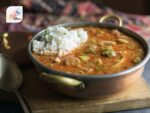
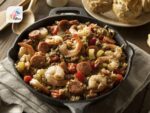




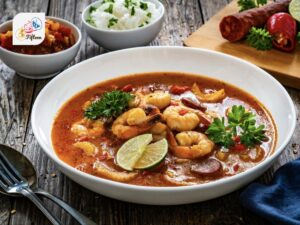
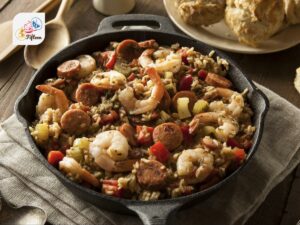
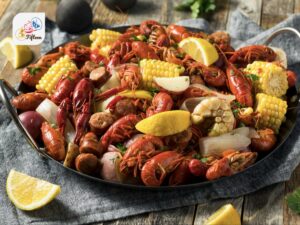
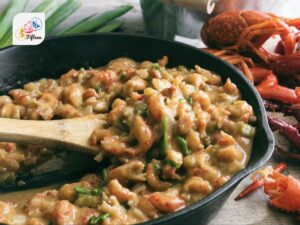
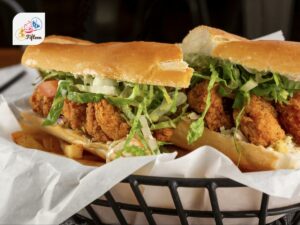
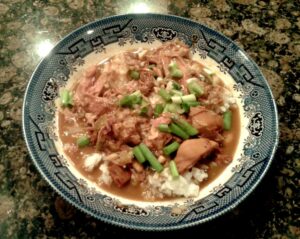
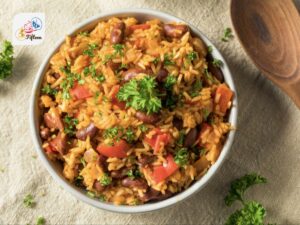


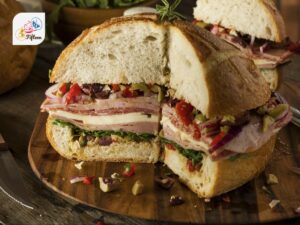
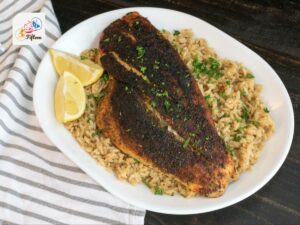
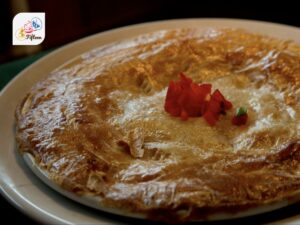
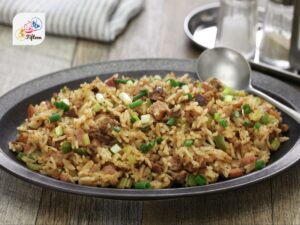
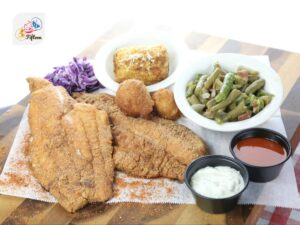
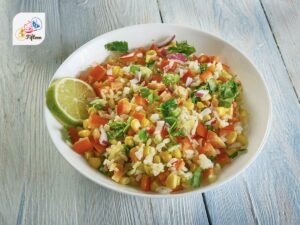
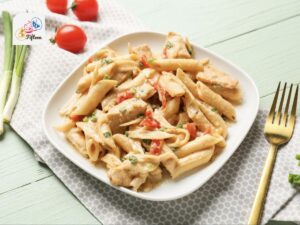
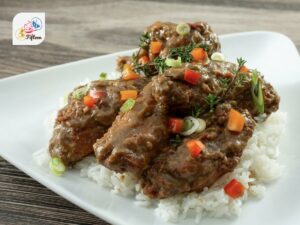
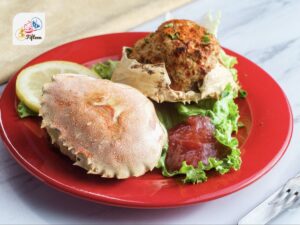
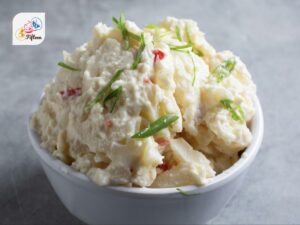

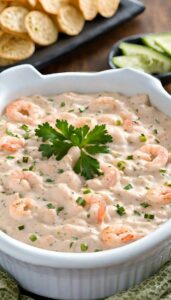
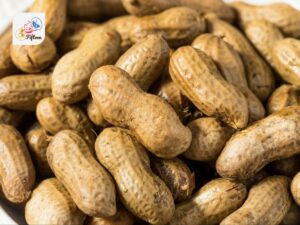

Jamie Scott
Editor in Chief, Senior Content Writer
Expertise
Home Cooking, Meal Planning, Recipe Development, Baking and Pastry, Food Editor, Cooking-video Maker, Western Food Evaluation Expert
Education
Le Cordon Bleu College of Culinary Arts
Local Community College, New York, NY
Jamie Scott is a skilled culinary expert and content creator specializing in Western cuisine. With over 15 years in the culinary field and formal training from Le Cordon Bleu, Paris, Jamie deeply understands how to blend nutrition with delicious flavors. His passion for cooking matches his commitment to making healthy eating accessible and enjoyable.
On Fifteen.net, Jamie brings a fresh perspective to classic dishes and beverages, offering readers insightful recipes, cooking tips, and a fresh view on meal planning that emphasizes taste, health, and simplicity.